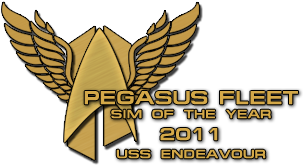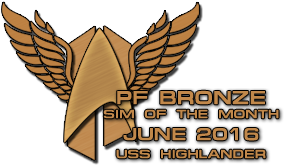The Game
The end of the Dominion War through the actions of the Federation, Romulan and Klingon alliance brought peace to the Alpha Quadrant, undisturbed beyond a few brief encounters even as the Romulans left the alliance in the years that followed. Starfleet began to once again divert its resources to its primary mission; that of exploration and seeking out new cultures. Starships on which production was halted during the war years in favour of the quicker to produce barebones vessels needed for the war effort were brought back into the production lines; Galaxy class starships that had been hastily constructed many of their non-critical internal sections left bare were brought back to drydock to complete their construction, and Starfleet's great scientists and engineers once again turned their intellects towards projects deemed unnecessary or too costly to continue during wartime.
In 2378, these scientists and engineers received an enormous flood of new data from the library computer of the USS Voyager, the first Federation starship to cross the Delta Quadrant. Throughout Voyager's travels, the crew had encountered and documented an untold number of new technologies, from their encounters with the Borg, the Caretakers, the Devore, the Vaadwaur and more. Much of it was classified, particularly where temporal incursions were involved, but even behind sealed doors Starfleet's brightest minds set about reverse-engineering as many technologies as possible.
New propulsion technology was considered of paramount importance in this work, and in 2385 Starfleet's Engineers had constructed a working prototype of an enlarged graviton catapult, utilising the power of an O-type star in the Cygnet system in place of the tetryon reactor used in the original. Over the course of the following three years, Starfleet tested the design, over and over, all the while deciding where to direct ships which would pass through it. They settled on the Delta Quadrant; the original home of the technology, and an area still largely unexplored outside of the narrow corridor of space around Voyager's return route. Locating a star of a similar type in the Iota system, Starfleet began sending resources through to begin building an identical catapult in the Delta Quadrant, along with a facility tasked to protect it from those in the region who would attempt to take control of the technology and use it to their own ends. By 2392, the Iota Catapult and Iota Command Facility were complete, and Starfleet began sending exploratory ships through under the 11th Fleet's 37th Task Force to begin the exploration of the quadrant.
In the intervening years, Starfleet's engineers continued studying the technology brought back by Voyager, and by 2391 were finally able to reproduce a working design for the Slipstream Drive, a revolution in starship propulsion which would allow those starships capable of carrying the drive to travel immense distances in a fraction of the time it would take with conventional warp travel. The fuel for the slipstream drive was rare, and the new speed posibilities introduced by the drive made it such a game changer that Starfleet decided to classify the technology, and install it only on a select few vessels. The USS Highlander was fitted with the new drive during an extensive refit before being assigned to further Task Force 37's exploration of the Delta Quadrant, under standing orders to investigate any potential new sources of the rare benamite crystals required by the drive.
Our Awards

(As USS Endeavour)








